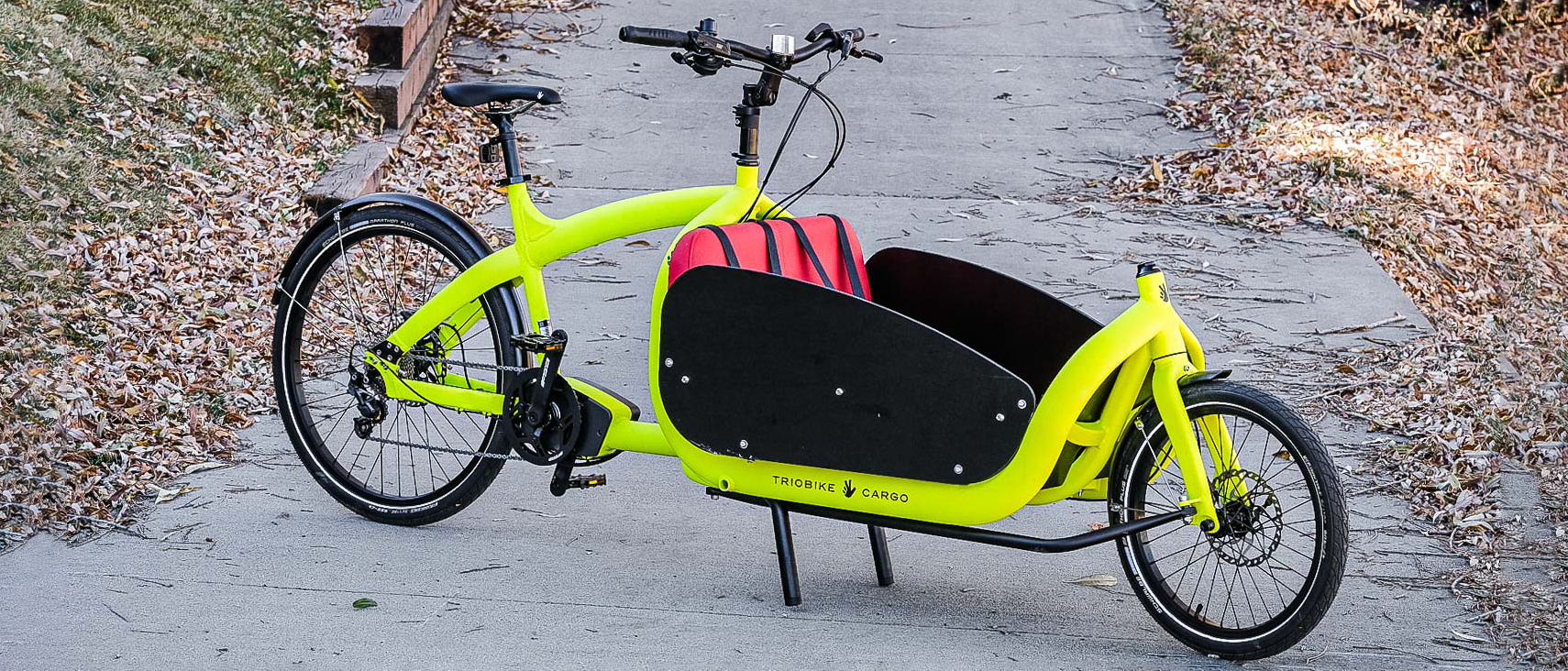Tom's Guide Verdict
If you’re going to be lugging a ton of cargo regularly, it’s hard to beat the massive 500-pound cargo capacity of the Triobike Cargo.
Pros
- +
Massive cargo capacity
- +
Fun to ride
- +
Lots of colors to choose from
- +
Can handle family and commercial uses
Cons
- -
Hard to get going from a dead stop
- -
Kickstand needs improvement
Why you can trust Tom's Guide
Size: 8.2 feet long
Weight: 67.7 pounds
Motor: Brose Drive S, 250 watts and 90Nm of torque
Battery: Lithium-Ion, 36 volts, and 501Wh
Max speed: 15mph
Range: not advertised
Transmission: Shimano Zee 10-speed
The paint job of the Triobike Cargo certainly screams “look at me!” It’s about more than vanity, of course; Triobike knows its Cargo bike is likely to hit the city streets and the hi-viz paint gets peoples’ attention whether they’re on foot, on a bike, or in a car. It’s a thoughtful touch for a bike full of them.
Some of those touches cater to the most precious cargo: your kids. The cargo box incorporates a padded seat with seatbelts, which means your kids will be excited to ride along. That same cargo box features a whopping 500-pound cargo capacity; bring the whole soccer team to practice if you dare.
It’s a fun bike to ride for the pedaler, too, with an intuitive handlebar-mounted control and display, and better steering than the bike’s length would imply. As we discovered during this Triobike Cargo review, there’s room for improvement, but Triobike gets enough of the basics right — and then some — to make it worth a long look if you’re in the market for a heavy-hauler e-cargo bike.
Triobike Cargo review: Price and availability
Triobike has a handy dealer locator on its website so you can find a shop near you that carries the Cargo. You can configure your bike on the website too so you know what you’re getting and how much you’re spending before you reach out to a local shop.
The base model Triobike Cargo starts at $6,000. You can customize and add accessories from there; it’s pretty easy to add bells and whistles until the bike costs more than $9,000.
If you need more space to carry super-bulky items, you can bump up to the Triobike Cargo Big, which offers the same weight capacity but a longer deck at 42 inches long.
Triobike Cargo review: Design
The Triobike Cargo bike features a full aluminum frame and comes with a larger 26-inch rear wheel and a smaller 20-inch front wheel. The rear wheel also features a fender. According to Triobike, the Cargo bike weighs 68 pounds without accessories.
Get instant access to breaking news, the hottest reviews, great deals and helpful tips.

Triobike also says the Cargo bike is among the widest two-wheeled cargo bikes on the market; the widest part of the cargo box measures 24.4 inches (62cm) across.
Like its sibling, the Triobike Mono, the Cargo features a Brose Drive S motor that offers 250 watts and 90Nm of torque. It works in conjunction with a 10-speed Shimano drivetrain; you can upgrade this to a Gates Carbon Drive system if you want the quietest option available. The Cargo offers pedal-assist power only; there is no throttle.

The Cargo also features Shimano Zee hydraulic disc brakes. The battery is Lithium-Ion, 36 volts, and 501Wh. Triobike offers a 2-year warranty on the E-system.
The handlebar controls are simple to use and the heads-up display offers easy navigation for various settings and information access. Adjusting the pedal-assist power can be done easily with the up and down buttons, conveniently located near the left grip.
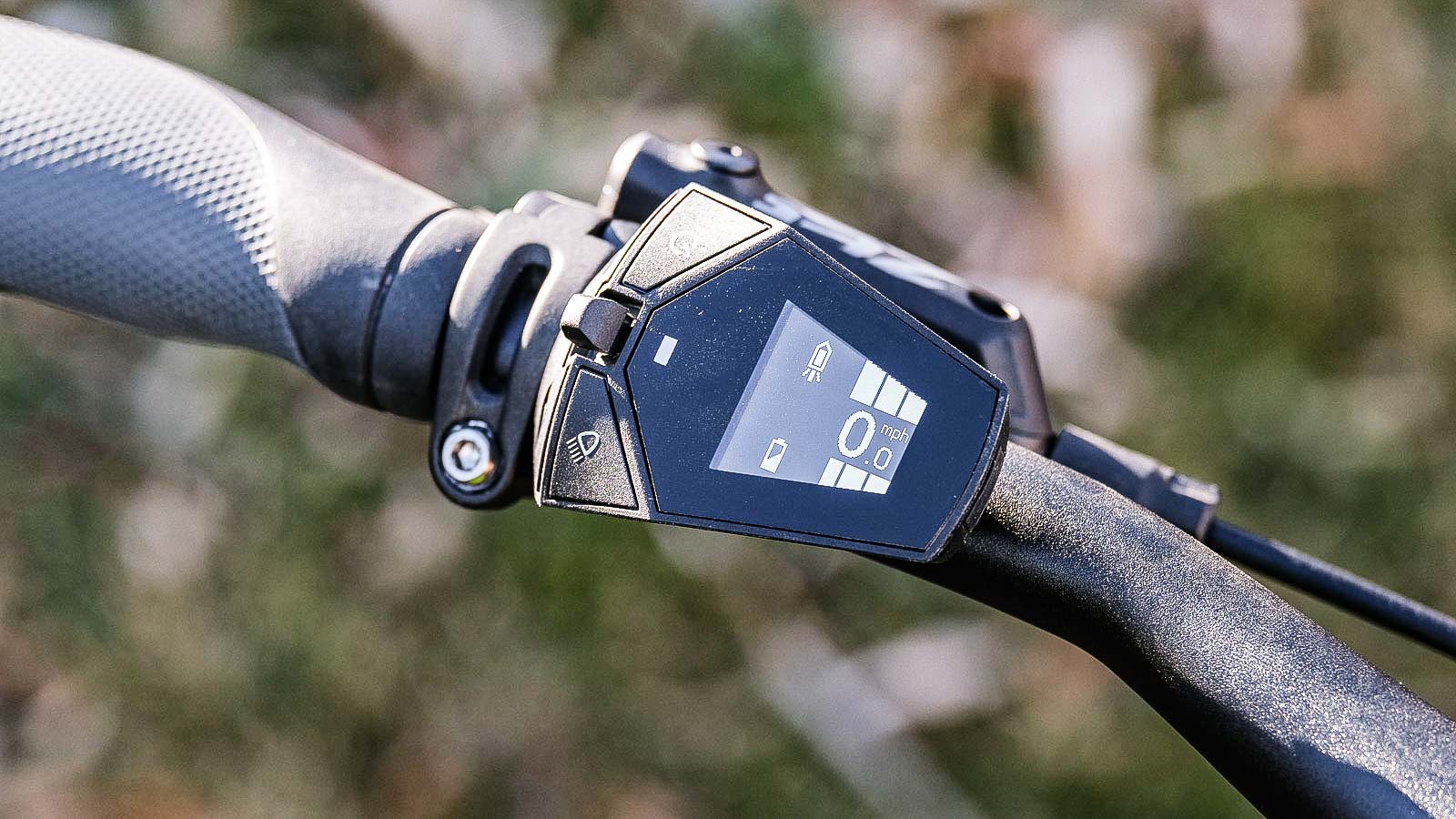
A wide kickstand lives underneath the cargo area. Just push it into place with your foot and rock the bike backward to put the bike in ‘park.’ This keeps the bike stable while loading and unloading cargo, and while your kids scramble in or out.

Notably, the Triobike Cargo does not feature a step-through design. That means you’ll need to kick your leg over the top tube when you’re mounting and dismounting. A lower, step-through design makes the process much easier, especially with a loaded cargo bike. It’s a point against the Triobike Cargo, but that higher top tube may be a structural decision that helps facilitate the big, 500-pound cargo capacity. It’s an easy trade-off if you’ll regularly be loading this bike up heavy.
Triobike Cargo review: Capacity
The Triobike Cargo can heft up to 500 pounds total. That’s definitely one of the best stats in the e-cargo bike category.

The load deck is 20 inches wide and almost 33 inches long (the latter figure gets shortened depending on the configuration you choose for the cargo box). If you’re hauling something extra wide, you can always remove the deck entirely and just use the bare frame. But keep in mind this will adversely affect handling, as a wider stance will tip the bike side to side more easily.
Triobike Cargo review: Performance
Starting from a dead stop, the Triobike Cargo can be a bit squirrelly. It tends to dip side to side as you start pedaling, and the pedal-assist doesn’t kick in quickly enough to bail you out. Since the top tube is not a step-through design, you’ll probably want to leave the bike on the center stand while you mount it. There’s a bit of a learning curve here.
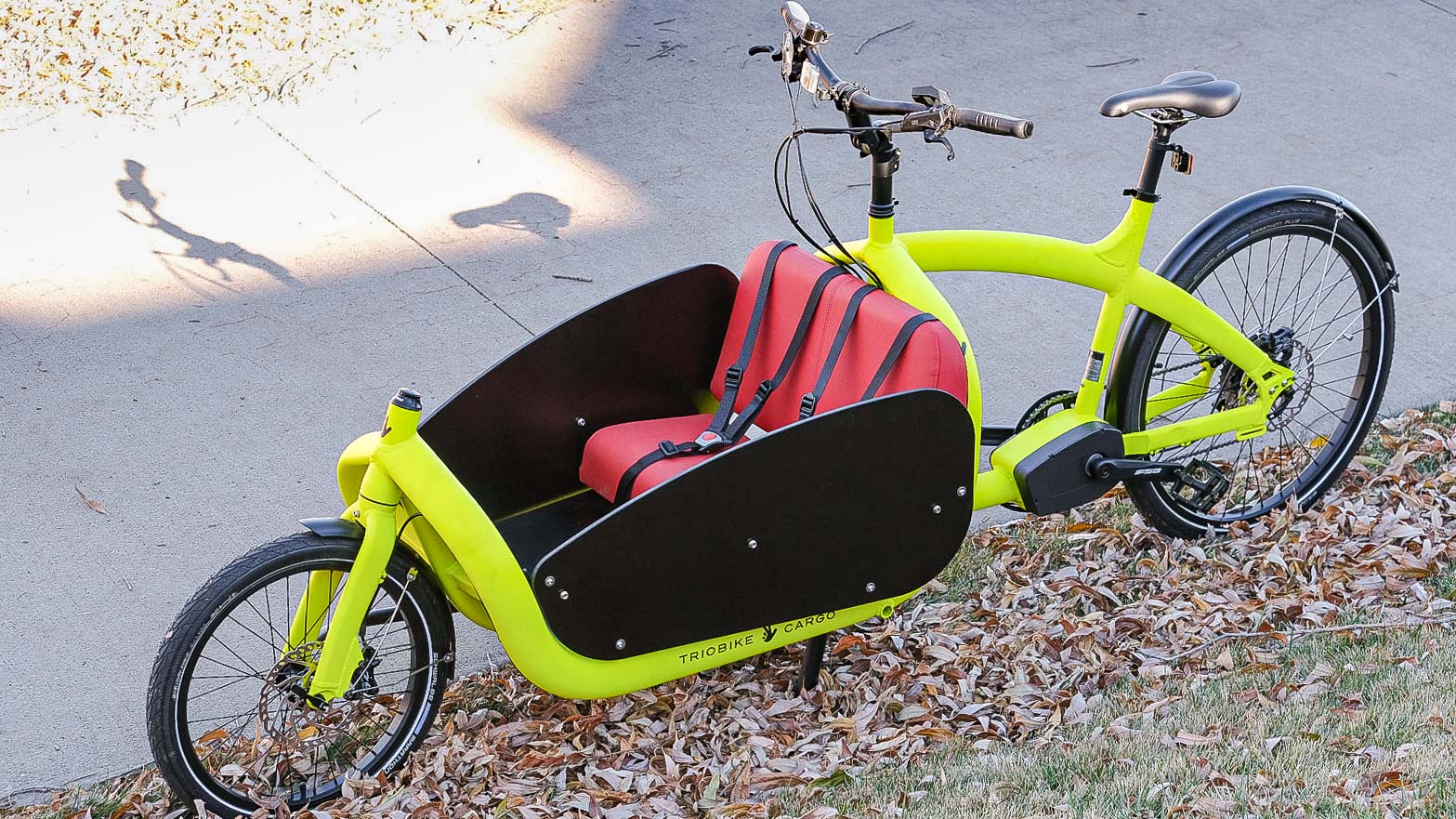
But once you get going, the Cargo feels plenty stable, and steering is pretty predictable. Like the Triobike Mono, the Cargo features a steering damper that makes the bike easier to control. The bike steers more sharply to the right, which makes it easier to turn the entire bike around.
Once you’re off and pedaling, the pedal-assist level feels just right. I was able to get up to 20mph pretty easily, at which point you’ll be pedaling under your own power. There’s enough torque to get you up steep inclines, though the motor does start to make a bit of noise at that point. Gentler inclines were no problem. The handlebar-mounted controls are easy to reach and intuitive to use.
The cargo bay sits low to the ground, which makes the bike feel super stable, especially when loaded down. Steering doesn’t change too much with cargo in the box up front.
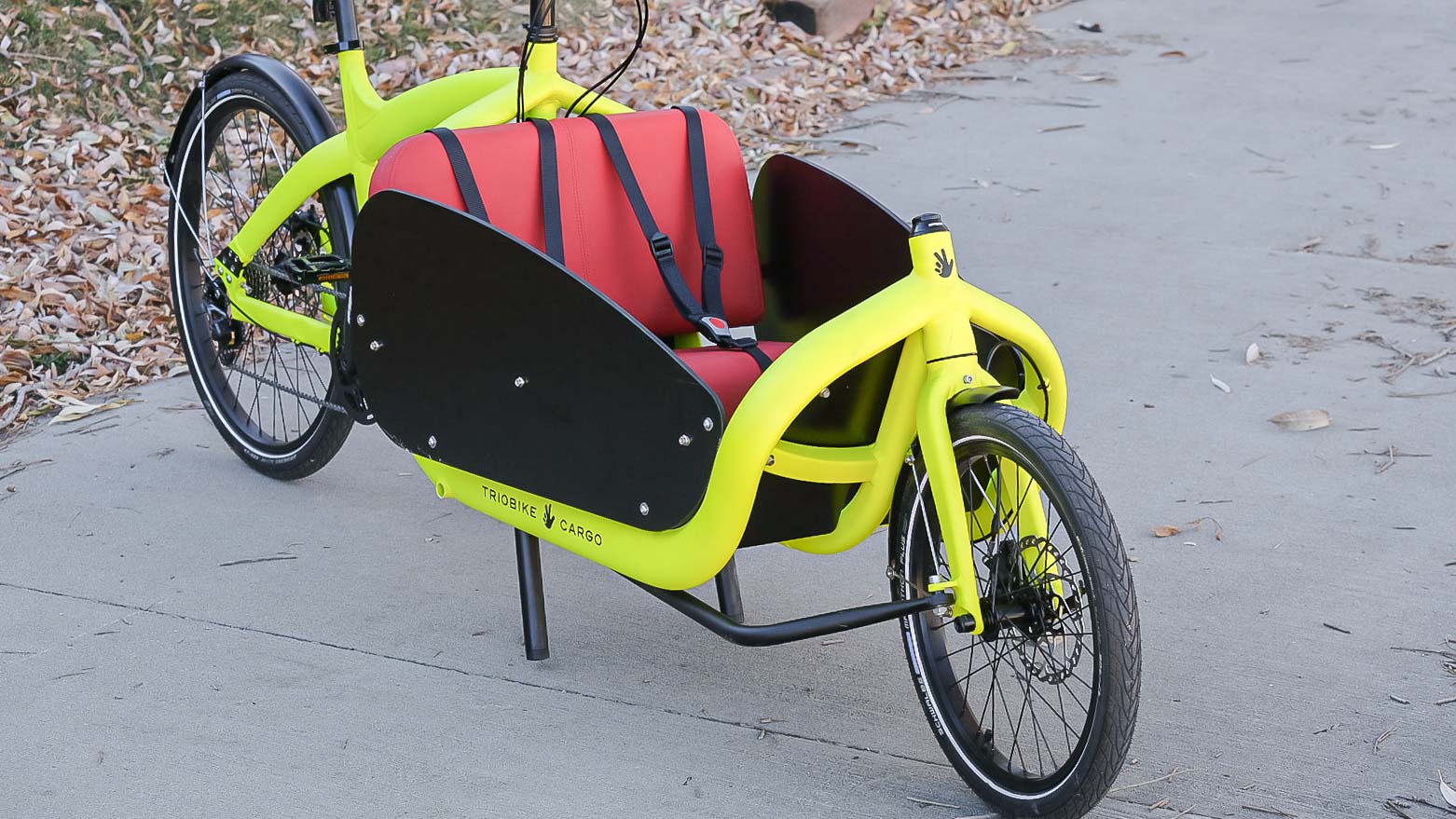
The center stand keeps the bike level when you’re loading or unloading, but it’s tough to reach. It sits underneath the cargo bay, so you have to stick your foot underneath the bike to pull it down. This gets tricky when the bike is loaded down with weight. The stand disengages with the slightest push forward on the handlebars, so be careful not to disengage the center stand accidentally. Triobike could stand to make the center stand a bit more usable and reliable.
Triobike Cargo review: Battery life
The Triobike Cargo comes with a 501Wh, 36V Lithium-Ion battery; Triobike does not advertise an expected battery life. After my first hour of riding with the pedal-assist at the most generous setting, the full charge dropped only one bar, which left plenty of life left in the battery.

Triobike also offers the option to buy a second battery at $939. You’ll probably only need a second battery if you’ll be taxing the system all day every day (think big cargo delivery, or big miles).
Triobike Cargo review: Accessories
You can certainly go a bit overboard with all the accessories Triobike offers. That’s great for customizability. If you’ll be hauling the kids, be sure to get the kid’s seat with seatbelts ($279), as well as the hood ($599) to protect them from the weather.
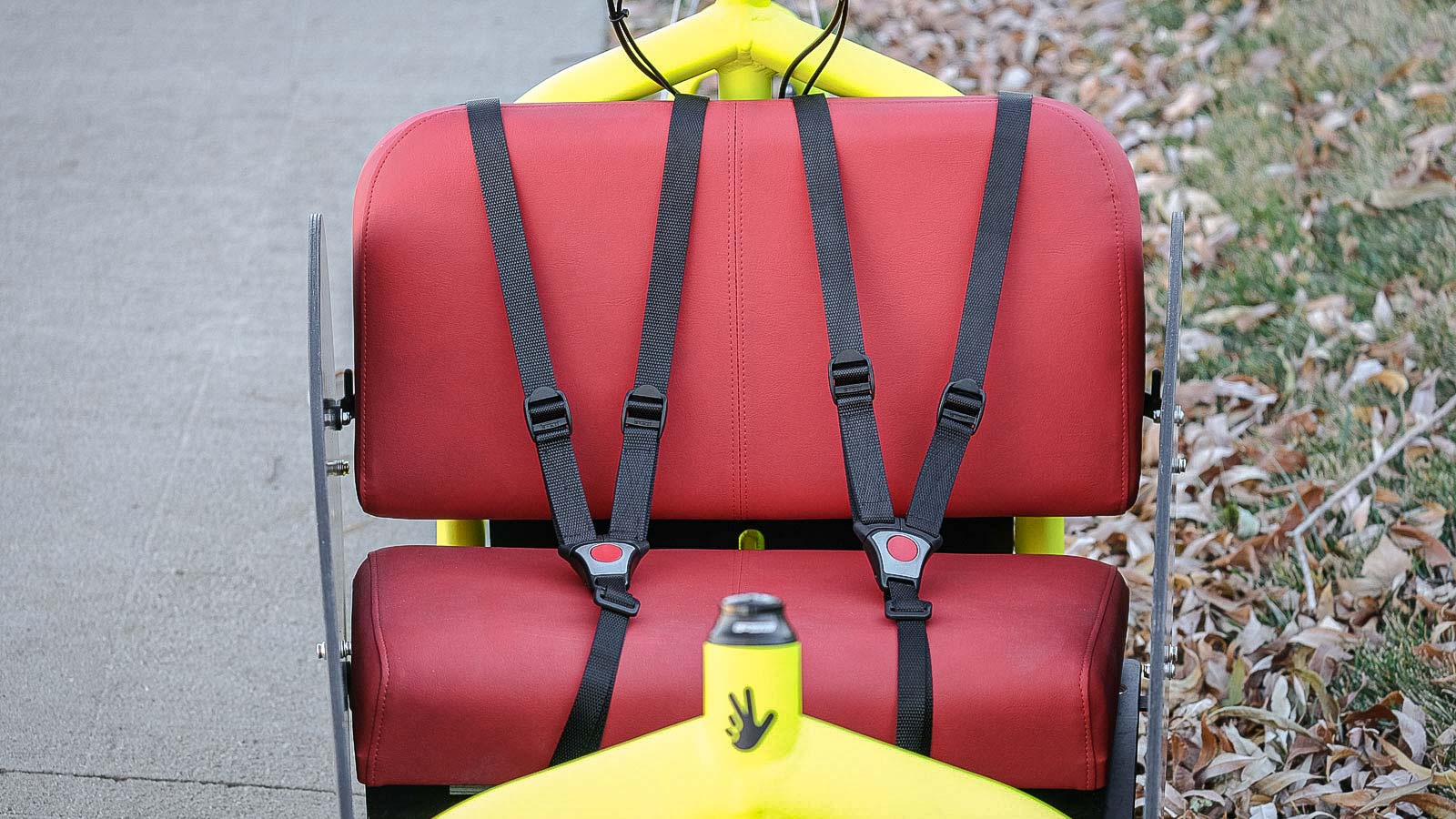
The cargo box sides and bottom ($349) help keep everything contained. You can go without them if you’ll be strapping down bulky items, but you’ll probably want the cargo box sides on hand for smaller cargo.
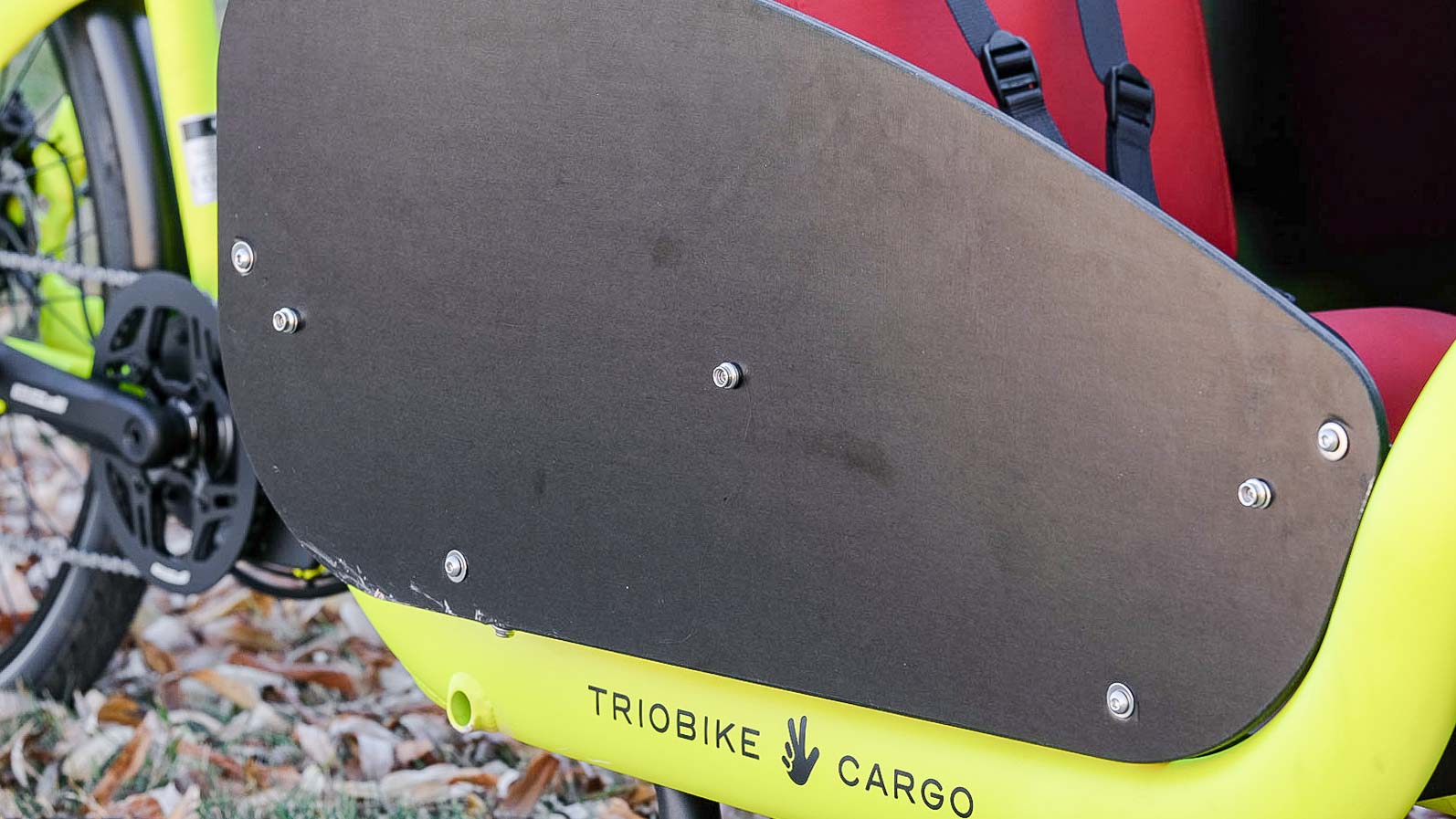
The Flight Case Box ($629) is an interesting upgrade for folks transporting fragile, bulky cargo. If you plan on doing frequent deliveries for a business, this might be a worthwhile upgrade. The box is waterproof and locks to protect valuables within.
An extra 501Wh battery costs $939, and an extra charger runs $129.
Finally, you can upgrade the drivetrain to a Gates Belt Drive system and Enviolo CA gearless continuously variable transmission for $700. This offers the quietest operation and eliminates the rear derailleur, which could be a good option if you’ll routinely be operating the Cargo in foul weather.
Triobike Cargo review: The competition
The Triobike Cargo’s closest competitors include the Urban Arrow Family (starting at $6,000), The Yuba SuperCargo CL (starting at $6,000), and the Riese and Müller Load 60 (starting at $8,800). The Cargo therefore fits nicely into the expected price range for e-cargo bikes.
The Cargo has a leg up on its competition thanks in large part to its massive 500-pound cargo capacity. This makes it unique and worth considering if you’ll regularly be hauling large loads. The Cargo outshines the competition here; the Yuba and Riese and Müller come close with a 440-pound max capacity, but the Cargo can heft an added 67 pounds on top of that.
The steering, especially from a dead stop, feels a whole lot more stable on the Yuba SuperCargo, and the center stand on the Yuba also outshines the Triobike version.

But otherwise, the Cargo seems to offer a lot of value and unique features that make it stand out in the crowd.
Triobike Cargo review: Verdict
The Triobike Cargo offers plenty of versatility if you’ll be carrying heavy loads. The cargo capacity (over 500 pounds!) is the primary benefit to the Cargo, in fact. This bike is burly and meant for the rigors of commercial use, or simply just toting the kids around town.
The possibilities for small businesses or deliveries makes the Cargo an ideal choice for commercial purposes. The Flight Case Box offers a well-thought-out add-on for the business-minded.
It’s a good bike that’s a few refinements away from great. Getting the bike going from a standstill takes some practice, as it tends to sway side to side as you’re pedaling to engage the pedal-assist. Among the best electric bikes, the Yuba Supercargo CL has a slightly lower center of gravity thanks to a smaller, 20-inch rear wheel. Getting the Yuba going from a standstill takes far less effort, the pedal-assist kicks in faster, and the bike remains far more stable.
I didn’t load the Triobike Cargo with 500 pounds as the max capacity suggests, but given its relative instability getting going while lightly loaded, it seems a fully-loaded cargo area may present some problems when you’re getting going from a dead stop. And, the kickstand needs refining, both in terms of access and usability. It’s difficult to get your foot on it and hold it in place while you rock the bike backward.
Overall, however, the Triobike Cargo is a fun bike to ride that’s clearly made to adapt to a wide swath of users. If you’re after a bike that can handle the rigors of commercial use, the Cargo is a good candidate. All of Triobike’s optional accessories means you can tailor this for more family-friendly use, too.

Dan Cavallari is the former technical editor for VeloNews Magazine, who currently reviews electric bikes, bike lights, and other bike accessories for Tom's Guide. In addition to VeloNews, his work has appeared in Triathlete Magazine, Rouleur Magazine, CyclingTips.com, Road Bike Action, Mountain Bike Action, CycleVolta.com, Tomsguide.com, and much more. Dan also hosts two podcasts on his site, Slow Guy on the Fast Ride: One is about cycling and other outdoor activities, while the other looks at mental health issues. Most recently, Dan also covered the 2022 Tour de France. Dan lives outside of Denver, Colorado with his family.
